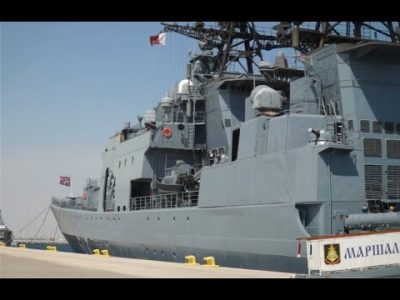Last Updated on 06/19/2020 by OTC
Damen Shipyards Group and the German Bundesamt fur Ausrüstung, Informationstechnik und Nutzung der Bundeswehr signed the contract for the construction of four MKS-180 frigates for the German Navy, Damen announced on 19th June. Damen is the main contractor for this complex project which it is undertaking, together with partners Blohm+Voss and Thales, in Germany.
The combination of companies was previously declared the winner of a European tender; the largest in the history of the German Navy. On 17 June, the necessary financial resources were released by the German Bundestag budget committee. The contract marks the start of the design and construction phase.
Approximately 80% of the project investment remains in Germany as added value. The vessels will be built at Blohm+Voss in Hamburg, but partly also at other shipyard locations in Germany, including Bremen, Kiel and Wolgast. Besides this, approximately 100 small and medium-sized companies from the maritime industry, mechanical engineering and plant construction sectors will be involved in the implementation. These companies originate from almost all German states.
Hein van Ameijden, Managing Director Damen Schelde Naval Shipbuilding: “I am convinced that with the MKS-180 project, we are building a high-quality frigate that meets all the wishes of the German Navy. It is a German-Dutch project. We are already working well with our partners in Germany; Luerssen, Blohm+Voss, and Thales. The project also offers prospects for further European cooperation. The many years of cooperation between Damen and Thales as part of the Dutch golden ecosystem is an important factor in this success. If the Netherlands continues to invest in innovative projects for its own navy, we can further expand our role within European naval construction. That’s good for the Netherlands’ strategic role, which fits in with the Defence Industry Strategy.”
The German added value and knowledge development also apply to Thales’s mission systems acquired within the project. Approximately 70% is supplied by Thales’s German branches in Kiel and Wilhelmshaven. This is done in close cooperation with numerous subcontractors.
Gerben Edelijn, CEO of Thales Netherlands: “This historic contract for both the German Navy and Thales is a significant milestone in more than 50 years of cooperation, and confirms our worldwide leading position in the field of high-end naval mission systems. The women and men on board of these innovative frigates can rely on the latest technologies in the field of cyber defense, radar and fire control. The AWWS system, developed for the Netherlands and Belgian Navies, will soon also enable the German Navy to withstand threats of today and the coming decades.”
Damen, Lürssen, Bohm+Vos and Thales are delighted with the confidence that the German government places in it. The implementation of the project will begin soon and involves the delivery of four frigates between 2027 and 2031 for an amount of approximately 4.6 billion euros. There is also an option to supply two more frigates after 2032.
Multi-purpose combat ship (MKS) 180:
The multi-purpose combat ship 180 (MKS 180) is an armament project of the German Navy. Around 5.27 billion euros is earmarked for the procurement of four ships, making the project the largest naval project of the kind in the history of the Bundeswehr.
The warships are said to be larger than the frigates of the Saxony class and to be adaptable to different types of mission through exchangeable mission modules. They should be able to engage targets in the air as well as above and below water, and to lead the country missions. The Bundeswehr names a crew size of up to 180.

The main requirements declared by the German Navy as follows;
- Can be used worldwide (high seas, marginal seas, coastal apron)
- Use in all climatic zones (arctic and tropical waters)
- The permanent ascent over 26 kts, permanent cruise 18 it’s to sea 4
- Driving range 4000 nm at 18 kn without additional supply
- Sea endurance 21 days
- Combined anti-missile defense (ASMD), anti-air warfare (AAW) and anti-surface warfare (ASuW) ability up to the outer border of the next area through a mix of tube weapons (medium multi-purpose tube weapon against the sea and air targets, two light tube weapons against the sea and air targets, two RAM block 2), missiles and decoys (two multi-function launchers ) with a “threat-appropriate detection unit” to cover the entire EM spectrum (radar, IR, laser)
precise, graded and selective combat of sea targets in the medium range (e.g. with an onboard helicopter) - Onboard gun in 127 mm calibre
- medium-sized anti-aircraft missile ESSM with> 50 km range
- EloUM capability from 0.5 to 40 GHz
- Detection of warfare agents
- Protection of ammunition facilities, ship command areas and operations center against handgun fire calibre 12.7 mm hardcore
- Central camera surveillance for the upper deck and side walls in the port
- Access control options (PIN/chip card) on all bulkheads/hatches that can be opened from the outside
- Day and night recording options for organic UAV / onboard helicopters even under meteorological boundary conditions













Comments